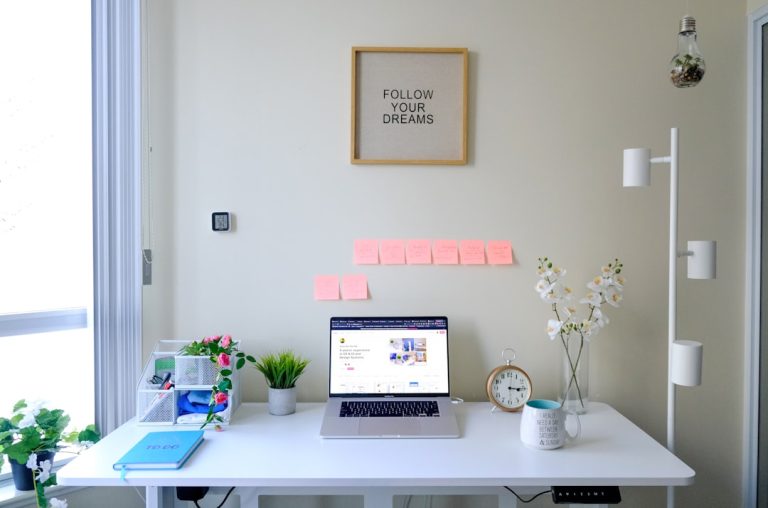For years, my creative process felt like wading through a swamp. Ideas, brilliant one moment, would vanish the next. My physical desk was a graveyard of crumpled notes, half-filled notebooks, and Post-it note constellations. Digitally, it was no better: dozens of browser tabs, random text files, and desktop icons scattered like confetti after a party. It was a mess, both literally and figuratively, and it was draining my productivity and mental energy. Then, I discovered the humble yet powerful digital whiteboard, and it completely revolutionized how I organize ideas and, surprisingly, how I maintain a pristine workspace.
The Chaos Before the Canvas: My Struggle with Scattered Thoughts and a Messy Desktop
Before embracing digital whiteboards, my working environment was a constant battle against entropy. Every new project, every fleeting thought, every research snippet contributed to a growing avalanche of information. I’d start with a clear intention, perhaps to outline a new blog post or plan a complex project, but within hours, my workspace would devolve into a chaotic landscape. Physical notes would pile up, each containing a fragment of an idea, a half-baked concept, or a reminder that I’d inevitably lose.
Digitally, the situation was equally dire. My computer desktop, meant to be a launchpad, became a dumping ground. Screenshots, downloaded articles, and hastily saved documents formed an impenetrable jungle of icons. Browser windows proliferated, each tab a potential rabbit hole I might need to revisit. This constant visual and cognitive clutter wasn’t just unsightly; it was a significant drain on my mental resources. The sheer effort of trying to locate a specific piece of information or connect disparate ideas felt like a monumental task, often leading to frustration and procrastination. My brain was working overtime just to filter out the noise, leaving little room for actual creative output or deep work. It became clear I needed a systematic way to capture, connect, and consolidate my ideas without adding to the physical or digital mess.
My First Foray: Discovering the Digital Whiteboard as a Sanctuary for Ideas
The turning point came during a particularly challenging brainstorming session. I was trying to map out a complex content strategy, juggling multiple documents, a physical notebook, and a literal wall of sticky notes. The process was fragmented and inefficient. A colleague mentioned using a digital whiteboard for collaborative projects, and while my initial thought was that it sounded like just another tool to learn, curiosity got the better of me. What I found was a revelation.
The infinite canvas of a digital whiteboard immediately struck me. No longer was I constrained by the size of a piece of paper or limited by the physical space on my desk. I could zoom in, zoom out, and expand my thoughts organically. It felt like stepping into a vast, empty room where I could arrange my ideas without any physical limitations. This wasn’t just a digital version of a physical whiteboard; it was a dynamic, flexible, and endlessly expandable workspace. It quickly became my personal sanctuary for nascent ideas, a place where I could dump everything without judgment, knowing I could organize it later. It offered a visual freedom that traditional tools simply couldn’t match, transforming my approach to idea generation from a linear, often stifling process to a fluid, exploratory journey.
Mapping My Mind: Specific Techniques for Capturing and Connecting Concepts
Once I grasped the potential of digital whiteboards, I began to develop a personalized system for organizing my thoughts. It wasn’t about simply replicating physical notes; it was about leveraging the unique capabilities of the digital environment to enhance my thinking process. My core philosophy became: “capture everything, organize strategically.”

Sticky Notes, Shapes, and Arrows: My Core Toolkit
My primary method for initial idea capture is deceptively simple: digital sticky notes. Each fleeting thought, keyword, or question gets its own note. I use different colors to signify categories (e.g., blue for research, yellow for action items, green for creative concepts). The beauty here is the instant flexibility. Unlike physical Post-its, these can be resized, repositioned, and grouped with a simple drag-and-drop. I then use shapes and arrows to create visual connections between these notes. A rectangle might enclose a project phase, while an arrow indicates a dependency or a logical flow. This visual language helps me see the relationships between ideas, transforming a jumble of thoughts into a coherent visual thinking strategy.
From Brainstorm to Blueprint: Structuring Complex Projects
For more complex tasks, like planning a large content series or outlining a new feature for a product, my digital whiteboard becomes a dynamic blueprint. I start with a central theme and branch out into sub-topics, using a mind-mapping approach. Each branch can then be expanded with more detailed notes, links to external resources, or even embedded documents. This allows me to move from a high-level overview to granular details without losing sight of the bigger picture. I often create distinct sections on the same whiteboard for different stages of a project: ‘Ideation,’ ‘Research,’ ‘Outline,’ ‘Action Items,’ and ‘Review.’ This segmentation helps me manage the information overload that often accompanies large projects and ensures that every piece of the puzzle has its place.
The Living Document: Evolving Ideas Over Time
One of the most powerful aspects of using a digital whiteboard is its ability to serve as a ‘living document.’ Unlike a static paper outline, my whiteboards are constantly evolving. As new information emerges, or as my understanding of a topic deepens, I can easily add, remove, or rearrange elements. This iterative process is crucial for creative work and problem-solving. It allows me to continually refine my ideas, experiment with different structures, and adapt to new insights without starting from scratch. I can also easily duplicate sections or entire whiteboards to explore alternative approaches, ensuring that my best ideas are always visible and accessible.
The Unseen Declutter: How a Virtual Space Transforms My Physical Workspace
The most delightful, and somewhat unexpected, side effect of adopting digital whiteboards for idea organization has been the radical transformation of my physical and digital desktop. The “clean desktop” aspect of the title isn’t just a happy accident; it’s a direct consequence of centralizing my mental chaos.
Banish the Sticky Note Swarm
Before, my monitor bezels, desk edges, and even my keyboard were adorned with a mosaic of physical sticky notes. Each one represented a task, a thought, a reminder. While they served a purpose, they also created a constant visual noise that contributed to mental fatigue. Now, all those notes live on my digital whiteboard. I can still see them, arrange them, and prioritize them, but they’re contained within a single, organized virtual space. This means my physical desk is now free of paper clutter, allowing for a much calmer and more focused environment. The absence of physical distractions helps reduce cognitive load and enables deeper concentration.


